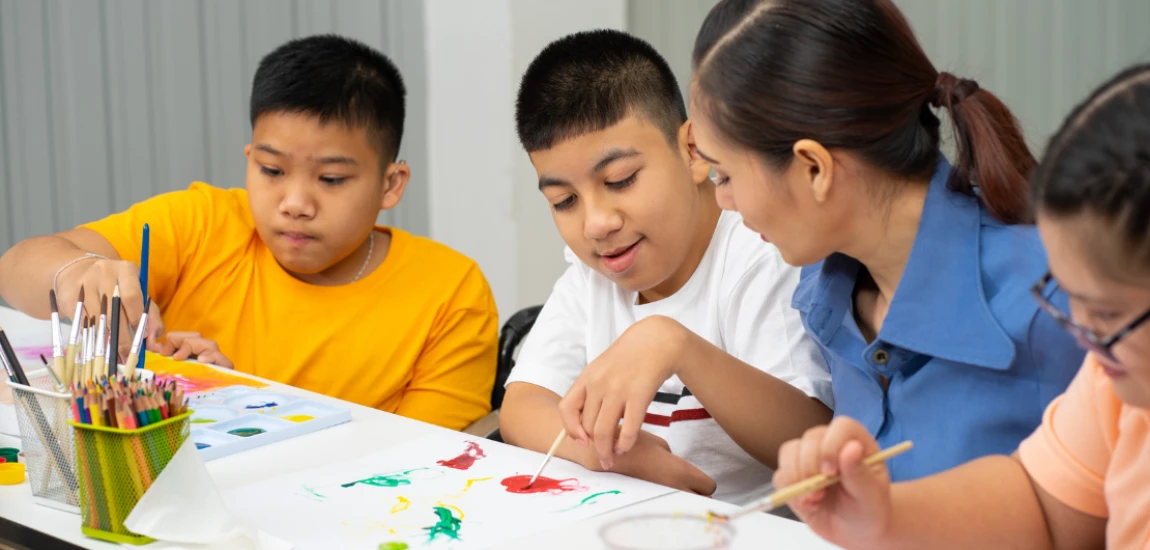Neurodiverse Narratives: Rethinking Story Logic Beyond Neurotypical Norms

For centuries, storytelling has followed a familiar rhythm—setup, conflict, resolution. But what happens when the storyteller, or the story’s perspective, doesn’t think that way? As awareness of neurodiversity grows, so too does the recognition that traditional “story logic” has been built largely around neurotypical norms. Neurodiverse narratives—those shaped by minds that perceive, process, or express differently—are challenging that template in profound ways.
These stories don’t always follow linear time, clear causality, or traditional character arcs. Instead, they may reflect associative thinking, sensory immersion, hyperfocus, or fragmented perception—features not of disorder, but of difference. From films like Everything Everywhere All At Once to the introspective fiction of writers like Mark Haddon or Temple Grandin, the narrative form itself bends around the cognition it expresses.
Rethinking story logic through a neurodiverse lens doesn’t just create more inclusive representation; it expands what storytelling can do. It invites us to experience time, memory, and emotion from radically different angles. This blog explores how neurodiverse modes of thought are transforming storytelling structures, aesthetics, and ethics—and why that shift matters.
Breaking the Linear Mold: Time, Memory, and Nonlinear Storytelling

One of the most striking features of neurodiverse narratives is their resistance to linear time. Instead of moving neatly from beginning to middle to end, these stories may loop, fracture, or fold in on themselves—mirroring how neurodivergent minds often experience memory and perception.
Temporal Fluidity and Associative Thinking
For some autistic or ADHD storytellers, memory and imagination interweave seamlessly. Stories unfold as associative connections rather than chronological sequences. Think of how The Curious Incident of the Dog in the Night-Time weaves logical investigation with sensory overload, or how Everything Everywhere All At Once collapses timelines into simultaneous emotional truths. This structure doesn’t “break” story logic—it redefines it around a different kind of logic: emotional, sensory, or pattern-based rather than purely causal.
Fragmented but Coherent
Nonlinear storytelling often gets labeled “confusing,” but within neurodiverse frameworks, fragmentation can reflect genuine coherence. A mind that processes multiple stimuli or hyperfixations simultaneously might tell a story where threads overlap, repeat, or spiral. The pattern is internal, not external—requiring the audience to experience story as cognition, not just content.
Story as Sensory Flow
Some neurodiverse narratives use sensory progression instead of temporal structure—smells, colors, or sounds become narrative anchors. This storytelling reflects a world experienced not through linear logic but through sensory mapping. It’s immersive, affective, and deeply embodied.
Sensory Storytelling: Seeing, Hearing, and Feeling Differently

Neurodiverse creators often emphasize sensory experience as central to storytelling. What might seem like “too much detail” or “irrelevant description” from a neurotypical standpoint becomes the core narrative texture—a world built from sensory intensity rather than plot mechanics.
Sensory Overload and the Poetics of Detail
Autistic writers often describe the world in vivid, hyper-specific detail, not because it’s decorative, but because it’s truthful. In Temple Grandin: How the Girl Who Loved Cows Embraced Autism and Changed the World, the sensory logic of thought defines both narrative and emotion. Detail isn’t background—it’s the plot itself.
The Sound of Attention
In audio storytelling or film, neurodiverse creators use sound to represent attention in flux. Background noises come forward; dialogue fades. The soundscape becomes a reflection of focus, not just a supplement to it. This is storytelling through the shape of attention, allowing audiences to inhabit different perceptual worlds.
From Texture to Emotion
Neurodiverse narratives remind us that feelings can emerge through sensory patterns rather than through dialogue or exposition. The hum of a fluorescent light, the pattern of tiles on a floor, or the rhythm of typing on a keyboard can carry emotional resonance. This sensory logic builds empathy not through explanation, but through experience.
Language and Expression: Rethinking Voice and Communication

Storytelling is built on communication—but what happens when communication itself is non-normative? Neurodiverse narratives often challenge assumptions about clarity, coherence, and linguistic expression.
Echolalia, Repetition, and Patterned Speech
Repetition in dialogue or prose is sometimes dismissed as stylistic excess, but within neurodiverse storytelling, it can express rhythm, reassurance, or thought looping. Characters who echo phrases or ideas aren’t being redundant—they’re thinking aloud, processing reality through repetition.
Alternative Logics of Expression
Writers like Hannah Gadsby or Ocean Vuong show how fragmented, nonlinear speech can be deeply poetic and truthful. Their work blurs essay, monologue, and fiction, mirroring thought patterns that don’t fit traditional narrative clarity. Neurodiverse expression doesn’t “fail” communication; it expands it.
Silence as Narrative Space
Silence—pauses, absences, unspoken thought—can be as communicative as dialogue. Many neurodiverse creators use silence not as emptiness, but as meaning. In visual media, long still shots or muted sequences mirror this storytelling choice, challenging audiences to listen differently.
Emotion, Empathy, and the Myth of the “Flat Affect”

A common misconception about neurodiverse individuals is emotional “flatness” or lack of empathy. Neurodiverse narratives dismantle this stereotype by reframing how emotion operates in storytelling—less performative, more internal, and often richer for it.
Internalized Emotion and Alternative Affect
Many neurodiverse characters process emotion internally rather than outwardly. Stories that honor this difference—like Atypical or Mozart and the Whale—reveal emotional depth not through expressive cues but through patterns, choices, or moments of focus. The story’s emotional logic follows cognition, not convention.
Empathy Beyond Expression
Neurodiverse storytelling reframes empathy as understanding without mimicry. Instead of feeling what another feels, it’s about recognizing difference and connecting through structure, not imitation. This is a powerful shift that broadens both storytelling ethics and audience awareness.
Emotional Intensity and Hyperfocus
Conversely, hyperfocus often creates narratives of deep emotional intensity—obsession, passion, fixation. These aren’t exaggerated states but accurate reflections of how neurodiverse attention amplifies feeling. Emotional arcs become nonlinear—looping, surging, or oscillating instead of building toward resolution.
Neurodiversity in Genre: Sci-Fi, Mystery, and the Unreliable Mind

Certain genres naturally align with neurodiverse storytelling because they already question perception, logic, and reality. Science fiction, mystery, and surrealism have become powerful vehicles for exploring neurodiverse thought—not as pathology, but as perspective.
Sci-Fi as Cognitive Metaphor
In speculative fiction, alternate cognition often becomes a world-building principle. From Arrival to Annihilation, alien communication systems or nonlinear timelines echo neurodiverse ways of processing meaning. These narratives invite audiences to inhabit minds that don’t think “like us.”
Mystery and Pattern Recognition
Neurodiverse detectives—from Christopher Boone to Lisbeth Salander—turn pattern recognition into narrative propulsion. Their focus, logic, or social dissonance becomes an investigative advantage. Mystery as a genre thrives on difference, making it an ideal space to explore neurodivergent logic as superpower rather than deficit.
Surrealism and Sensory Overlap
Surrealism has long mirrored neurodiverse experience—synesthesia, overlapping senses, and dreamlike logic create a language of perception that feels truer to inner reality than literal description. This is storytelling through neuroarchitecture—form as cognition.
Writing Beyond Norms: Ethics, Representation, and Creative Practice

Embracing neurodiverse storytelling means more than featuring neurodivergent characters—it requires rethinking how stories are told, structured, and received.
Ethical Storytelling and Authentic Voices
Authentic neurodiverse narratives come from lived experience. Writers, filmmakers, and game designers who are neurodivergent bring insight that can’t be mimicked. Authenticity means allowing form, pacing, and focus to reflect real cognitive variation, not forcing conformity to neurotypical expectations.
Collaboration and Accessibility
Storytelling ecosystems benefit when neurodiverse creators are included at every level—writing rooms, editing, production, and critique. Accessibility isn’t just about audience comprehension; it’s about creative inclusion. For instance, alternative writing processes, sensory-friendly workspaces, and adaptive pacing can unlock new creative potential.
Expanding Story Ethics
Neurodiverse narratives challenge the ethical foundations of storytelling itself. They ask: Who defines coherence? Who decides what’s “normal” expression? By widening our definition of story logic, we make room for more ways of knowing, feeling, and imagining. That expansion isn’t a trend—it’s an evolution.




